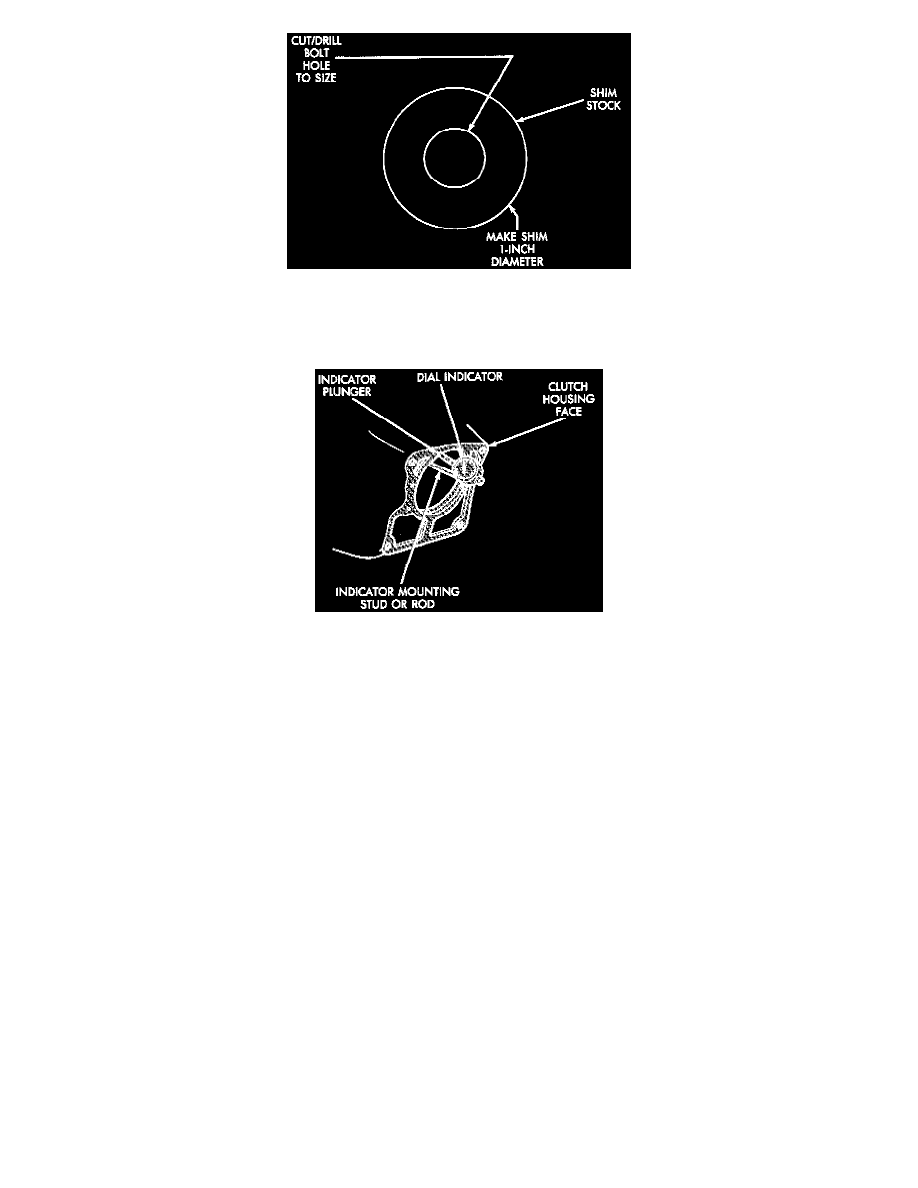RAM 2500 Truck 4WD V8-59L VIN Z LDC (1998) Manual Transmission Bell Housing Specs

Housing Face Alignment Shims
Housing face runout, on gas or diesel engines, can be corrected by installing shims between the clutch housing and transmission. The shims can be
made from shim stock or similar materials of the required thickness.
Measuring Clutch Housing Face Runout
As an example, assume that face runout is the same as shown in and in Step 4. In this case, three shims will be needed. Shim thicknesses should be
0.009 inch (at the 0.000 corner), 0.012 inch (at the -0.003 corner) and 0.013 inch (at the -0.004 corner).
After installing the clutch assembly and housing, tighten the housing bolts nearest the alignment dowels first.
Clutch housing preferred bolt torques are:
-
41 Nm (30 ft. lbs.) for 3/8 inch diameter bolts
-
68 Nm (50 ft. lbs.)for 7/16 inch diameter bolts
-
47 Nm (35 ft. lbs.) for V10 and diesel clutch housing bolts
During final transmission installation, install the shims between the clutch housing and transmission at the appropriate bolt locations.
MISALIGNMENT
Clutch housing alignment is important to proper clutch operation. The housing maintains alignment between the crankshaft and transmission input
shaft. Misalignment can cause clutch noise, hard shifting, incomplete release and chatter. It can also result in premature wear of the pilot bearing,
cover release fingers and clutch disc. In severe cases, misalignment can also cause premature wear of the transmission input shaft and front bearing.
Housing misalignment is generally caused by incorrect seating on the engine or transmission, loose housing bolts, missing alignment dowels, or
housing damage. Tighten all the clutch housing bolts to proper torque before installing any struts. Also be sure alignment dowels are in place and
seated in the block and housing before bolt tightening. Infrequently, misalignment may also be caused by housing mounting surfaces that are not
completely parallel. Misalignment can be corrected with shims.
